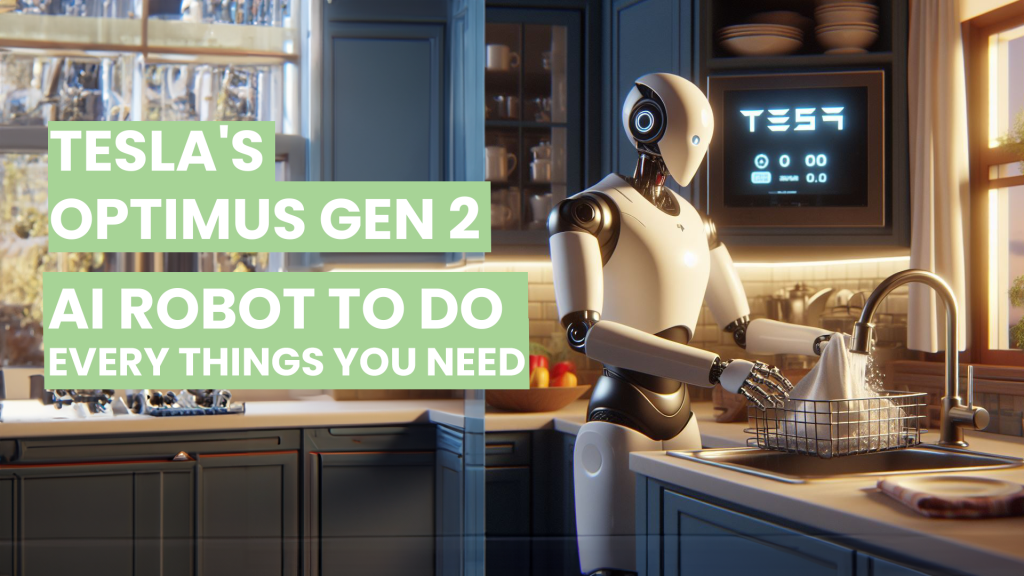Introduction:
Ladies and gentlemen, hold onto your hats because Tesla just dropped a bombshell that’s about to shake the very foundations of what you thought robots could do! Optimus Gen 2, the rockstar of robotics, designed to flip the script on mundane and labor-intensive tasks. This isn’t just a robot; it’s the maestro orchestrating a symphony of efficiency in our daily lives.
Unveiling Optimus Gen 2:
Tesla’s recent announcement unveils Optimus Gen 2, a humanoid robot designed to revolutionize repetitive manual labor tasks. Imagine a future where robots can seamlessly integrate into our daily lives, performing tasks that are both mundane and labor-intensive.
Initial Skepticism and Progress:
However, the journey wasn’t without hurdles. Optimus faced initial skepticism, especially after a less-than-perfect demonstration at Tesla AI Day. But fear is not! Tesla has been hard at work addressing these concerns and making substantial progress.
Recent Updates and Improvements:
Fast forward to Tesla’s 2023 shareholders meeting, where significant updates were shared. Optimus Gen 2 now boasts advanced prototypes showcasing its ability to autonomously perform tasks like object sorting. With end-to-end neural network training, it’s a leap forward in robotics, featuring improved mobility, refined design, and enhanced capabilities in handling various objects.
Challenges in Robotics:
Yet, challenges persist in the robotics and autonomous vehicles realm. Hardware advancements have been remarkable, but the real hurdle lies in software development, particularly in artificial intelligence and machine learning. Tesla is navigating these challenges, striving for a future of fully autonomous systems.
Multimodal Advances:
Enter multimodal large language models (LLMs). These models are transforming the game by processing and integrating various data forms, including text, images, and sensory inputs. This means more sophisticated reasoning in complex situations, where traditional computer vision techniques fall short.
Language-based Reasoning and Robotics:
The language component of these models is particularly transformative, enabling nuanced and context-aware interpretation of the environment. This is crucial in scenarios where visual cues alone may not suffice. Picture a balloon in the road – should the system stop? With language-based reasoning, the answer becomes more sophisticated.
Deployment Caveats – Cloud vs. Edge Computing:
However, challenges persist. One key challenge is deciding between cloud-based and edge-computing solutions. Cloud computing offers computational power and easy updates but faces limitations in latency and connectivity. Edge computing, processing data on the device, offers lower latency but is constrained by limited computational power.
Conclusion:
In conclusion, Tesla’s Optimus Gen 2 represents a significant step towards a future where robots seamlessly coexist with humans, performing tasks efficiently and intelligently. As technology advances, challenges are met head-on, paving the way for a more automated and interconnected world. Stay tuned for more updates on Tesla’s journey in reshaping the future of robotics!
Thank you for joining us on this exploration of Tesla’s Optimus Gen 2. If you enjoyed this video, don’t forget to like, subscribe, and hit the notification bell for more content. Until next time, stay curious!

[…] machine learning using python projects […]